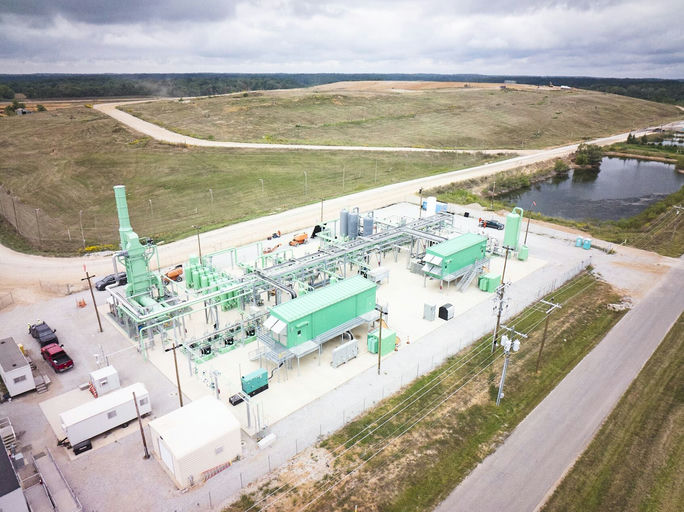bp’s Archaea Energy is the largest renewable natural gas (RNG) producer in the U.S., with an industry leading RNG platform and expertise in developing, constructing and operating RNG facilities to capture waste emissions and convert them into low carbon fuel. Archaea partners with landfill owners, farmers and other facilities to help them transform their feedstock sources into RNG and convert these facilities into renewable energy centers. Starlee Sykes, Archaea Energy’s Chief Executive Officer, shared more about bp’s acquisition of the company and their vision for the future.
Q: bp completed its acquisition of Archaea in December 2022. What is the significance of this acquisition for bp, and how does it bolster Archaea’s mission to create sustainability and stability for future generations?
A: The acquisition was an important move to accelerate and grow our plans for bp’s bioenergy transition growth engine, one of five strategic transition growth engines. Archaea will not only play a pivotal role in bp’s transition and ambition to reach net zero by 2050 or sooner but is a key part of bp’s plan to increase biogas supply volumes.
Q: Tell us more about how renewable natural gas is used and why it’s an important component of the energy transition?
A: Renewable natural gas (RNG) is a type of biogas generated by decomposing organic material at landfill sites, anaerobic digesters and other waste facilities – and demand for it is growing. Our facilities convert waste emissions into renewable natural gas. RNG is a lower carbon fuel, which according to the EPA can help reduce emissions, improve local air quality, and provide fuel for homes, businesses and transportation. Our process creates a productive use for methane which would otherwise be burned or vented to the atmosphere. And in doing so, we displace traditional fossil fuels from the energy system.
Q: Archaea recently brought online a first-of-its-kind RNG plant in Medora, Indiana. Can you tell us more about the launch and why it’s such a significant milestone for the company?
A: Archaea’s Medora plant came online in October 2023 – it was the first Archaea RNG plant to come online since bp’s acquisition. At Medora, we deployed the Archaea Modular Design (AMD) which streamlines and accelerates the time it takes to build our plants. Traditionally, RNG plants have been custom-built, but AMD allows plants to be built on skids with interchangeable components for faster builds.
Q: Now that the Medora plant is online, what does the future hold? What are some of Archaea’s priorities over the next 12 months and beyond?
A: We plan to bring online around 15 RNG plants in each of 2024 and 2025. Archaea has a development pipeline of more than 80 projects that underpin the potential for around five-fold growth in RNG production by 2030.
We will continue to operate around 50 sites across the US – including RNG plants, digesters and landfill gas-to-electric facilities.
And we are looking to the future. For example, at our Assai plant in Pennsylvania, the largest RNG plant in the US, we are in the planning stages to drill a carbon capture sequestration (CCS) appraisal well to determine if carbon dioxide sequestration could be feasible at this site, really demonstrating our commitment to decarbonization and the optionality in value we have across our portfolio.
Q: bp has had an office in Washington, DC for many years. Can you tell us more about the role that legislation has to play in the energy transition?
A: Policy can play a critical role in advancing the energy transition, providing the necessary support to accelerate reductions in greenhouse gas emissions. We actively advocate for such policies through direct lobbying, formal comments and testimony, communications activities and advertising. We also advocate with regulators to help inform their rulemakings, as with the US Environmental Protection Agency to support the finalization of a well-designed electric Renewable Identification Number (eRIN) program.
Q: Science and innovation are key drivers of the energy transition. In your view, what are some of most exciting innovations supporting the goal to reach net-zero emissions?
A: We don’t just talk about innovation in bp, we do it – and have been for many years. This track record gives us confidence in continuing to transform, change and innovate at pace and scale. The Archaea Modular Design is a great example of the type of innovation that bp supports which enables us to pursue our goal of net-zero emissions.
Beyond Archaea, we have engineers and scientists across bp who are working on innovative solutions with the goal of lowering emissions. We believe that we need to invest in lower carbon energy to meet the world’s climate objectives, but we also need to invest in today’s energy system, which is primarily hydrocarbon focused. It’s an ‘and’ not ‘or’ approach, and we need both to be successful.
Learn more about Archaea and the work they are doing in energy transition.
